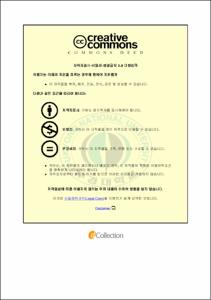GIS와 BCP를 이용한 저수지 재난대응 방안에 관한 연구
- Abstract
- Recently, Korea has experienced extraordinary disaster which has caused many human damage and properties. Disaster has threat and uncertainty, disaster management manage them. Disaster management prevents crisis which contain the dangerous and uncertainty, responses rapidly and effectively about already occurred disaster.
Business continuity planning (BCP) "identifies an organization's exposure to internal and external threats and synthesizes hard and soft assets to provide effective prevention and recovery for the organization, while maintaining competitive advantage and value system integrity”. It is also called business continuity and resiliency planning (BCRP). A business continuity plan is a roadmap for continuing operations under adverse conditions such as a storm or a crime. In the US, governmental entities refer to the process as continuity of operations planning (COOP).
Agricultural reservoir of Korea is important facility for securing agricultural water. There are 17,569 reservoir in Korea but 9,154(52.1%) reservoir constructed before 1945year. Also, most of reservoir become deteriorated because of constructed after 60years. Therefore, these reservoir are vulnerable to heavy rain in the summer season and frequently occurred drought in the winter and spring season. Because local heavy rain and typhoon by abnormal climate come with downpour which over design frequency, agricultural reservoir are threaten hydrologic stability of reservoir embankment. Furthermore it could leaded to an unanticipated emergency situation if structural deficiency occur at reservoir due to deteriorated of embankment.
Thus, this study has worked about emergency response method when the reservoir has occurred a disaster using BCP and GIS. This purpose of this study response efficiently about possible disaster at agricultural reservoir, is to help to minimize the damage of the people and property. For this purpose, this study has survey for employees of Korea Rural Community Corporation Seocheon district office. We have selected the priority of business about natural, human and infrastructure disaster by this survey. Also we plan BCP prevent a discontinuity of business and get back to a normal work flow as soon as possible when the reservoir have caused a emergency situation from the selected priority. Lastly, we work the hazard map for providing the information of a damage extend and a place of refuge using AreView, HEC-RAS and HEC-GeoRAS.
- Issued Date
- 2013
- Awarded Date
- 2013. 2
- Type
- Dissertation
- Publisher
- 부경대학교
- Affiliation
- 부경대학교 대학원
- Department
- 대학원 해양산업공학협동과정
- Advisor
- 윤홍주
- Table Of Contents
- 제1장 서론 1
제2장 연구대상 및 방법 3
제1절 연구대상 3
제2절 연구방법 6
1. 연구수행과정 6
2. Geo-Slope를 이용한 저수지 안전도 검토 7
2.1 침투류분석 7
2.2 사면안정분석 10
3. 계층적분석방법 12
4. 활동원가분석 14
5. 재해위험지도 작성 15
제3장 BCP에 대한 이론적고찰 16
제1절 재난과 재난관리 16
제2절 BCP의 필요성 및 정의 17
제3절 BCP의 구성요소 20
제4절 선행연구고찰 22
제5절 국내․외동향 24
제4장 BCP수립 26
제1절 동부저수지 제당 사면안정검토 26
1. 토질특성검토 26
2. 침투류분석 27
3. 사면안정분석 29
제2절 리스크평가 및 관리 36
제3절 업무영향분석 41
1. 단위업무정의 43
2. 업무우선순위선정 45
2.1 정성적영향평가(비재무적손실산정) 45
2.2 정량적영향평가(재무적손실산정) 49
2.3 최종업무우선순위정의 52
3. 복구목표시간정의 55
제4절 비상대응 59
1. 비상운영계획 59
2. 표준행동절차 61
3. 개인임무카드 61
4. 상황관리 62
4.1 상황설정 시나리오 62
4.2 상황전개 시나리오 작성 62
5. 교육 및 훈련 63
제5절 재해위험지도작성 64
1. DAMBRK모형을 이용한 홍수파 영향분석 64
2. 재해위험지도작성 68
2.1 재해위험지도의 필요성 68
2.2 재해위험지도의 국외 선진국의 활용사례 70
2.3 GIS를 활용한 재해위험지도 작성 71
3. 기대효과 및 활용 82
제5장 결론 83
참고문헌 86
재난발생 시 업무우선순위 선정에 대한 설문조사 양식 95
부록 103
- Degree
- Doctor
- Appears in Collections:
- 대학원 > 해양산업공학협동과정
- Files in This Item:
-
-
Download
 GIS와 BCP를 이용한 저수지 재난대응 방안에 관한 연구.pdf
기타 데이터 / 4.6 MB / Adobe PDF
GIS와 BCP를 이용한 저수지 재난대응 방안에 관한 연구.pdf
기타 데이터 / 4.6 MB / Adobe PDF
-
Items in Repository are protected by copyright, with all rights reserved, unless otherwise indicated.